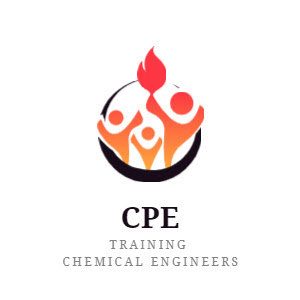First of all, Happy Holi to all of our readers.
In the recent time, i've shifted from Dr. Reddy's Labs (after 7 years of association) to Adama India.
Thanks to P Jagadish Kumar for guiding / mentoring & supporting me during these tenure, have completed most of my learning phase at DRL. It's a awesome experience working with many of the greats like Lakshminarayan Ashok, Arun Tiruselvam, Raghvendra Prasad etc.
Also, have been receiving good response to our Youtube Channel Pharma Engineering, thanks everyone for encouraging it.
If not subscribed till date, you can do it now 😊
Back after many days here to post on estimating the liquid nitrogen requirement for a process.
For most of the pharmaceutical professionals, Liquid nitrogen is not new. As most of us should have handled it in our manufacturing process or atleast should have seen it on youtube videos where vloggers will be making videos like Lava vs Liquid Nitrogen etc.
If not, check this video
Usually we will be using for the cases where we need chilling below -20℃, the reason is we might have chilled brine available at commercial scale even below -20℃, but it is not economical to mix methanol in water to reduce the utility temperature below -30℃ and chilling it, as the operating costs and maintenance costs will be high and simultaneously the variations in these costs will increase with seasons (it could be high in summer season due to environmental changes).
To have better usage of liquid nitrogen, we will be using cryo reactors and circulate the liquid nitrogen through the internal coil, so that the energy loss towards environment can be reduced and also the heat transfer coefficient can be increased due to internal circulation.
You Might Also Like:
Now, lets see some of the properties of Liquid nitrogen,
Temperature of liquid nitrogen ranges between -210℃ to -195℃
Density of liquid nitrogen = 804 Kg/m3
Specific heat of liquid nitrogen = 2 KJ/Kg.K = 0.478 KCal/Kg.K
Latent heat of liquid nitrogen = 199.2 KJ/Kg
While using the liquid nitrogen, the outlet is going to be chilled nitrogen gas.
Lets go into the calculation part, i got a query from one of our reader the case cooling of reaction mass with liquid nitrogen to -70℃ followed by addition of a specific reagent which has a heat of reaction of ~500 KJ/Kg of KSM.
Few things of his query, i've forgot, hence i'll be considering those things.
The way that we select to solve this is by performing energy balance, which is nothing but equating Demand with Supply.
Here the demand is from process end and the supply is from user end.
In this case, we have two types of demand i.e.,
i. Cooling to -70℃ from 30℃ (Demand - 1) followed by
ii. Addition of reagent at -70℃ with energy liberation of 500 KJ/Kg of KSM (Demand - 2) (this can be identified from RC1 report)
Heat load for Demand - 1 shall be established using the formula M x Cp x dT
For this we should know, the mass and its specific heat.
I've considered the mass as 3000 Kgs and specific heat as 0.5 KCal/Kg.K
So, Demand - 1 = 3000 x 0.5 x (30 - (-70)) = 150000 KCal.
Now lets shift to estimation of heat load due to addition of a reactant.
In this case the heat of reaction is already known, so just multiply the heat of reaction with input batch size, let the batch size be 100 Kg, so the HER is 100 x 500 = 50000 KCal.
Total heat demand = Demand - 1 + Demand - 2 = 150000 + 50000 = 200000 KCal.
Now, lets check the case of supply, we'll use (M x Cp x dT) + (M x ƛ)
M is the requirement, Cp is specific heat of Liquid Nitrogen, dT for Liquid nitrogen is ~15℃.
Considering worst case scenario, i'll consider a dT of 10℃.
So, now supply equation is (M x 0.478 x 10) + (M x ƛ) = (4.78 x M) + (M x 47.61) = 52.3 x M
47.61 is Latent heat of liquid nitrogen in KCal/Kg
Now equate Demand and Supply.
200000 = 52.3 x M
M = 3817.52 Kg
This is how we need to estimate the requirement of liquid nitrogen.
In the above case study, i've cooled the 3000 Kg of mass from 30℃ to -70℃, but it is recommended to cool the mass initially with regular utility like chilled brine till -15℃ or so, followed by liquid nitrogen.
Hope it is clear for everyone.....!!
Comments are most appreciated.... !!!
For any other queries, please connect with me at pharmacalc823@gmail.com
Other Articles:
Performing DOE in Minitab
Performing Capability Analysis in Minitab
Calculate NPSH - Net Positive Suction Head
How to Calculate height required for vapour column of batch reactor ?





 Hi! I am Ajay Kumar Kalva, owner of this site, a tech geek by passion, and a chemical process engineer by profession, i'm interested in writing articles regarding technology, hacking and pharma technology.
Hi! I am Ajay Kumar Kalva, owner of this site, a tech geek by passion, and a chemical process engineer by profession, i'm interested in writing articles regarding technology, hacking and pharma technology. 
Mass of reactor also taken ?
ReplyDelete